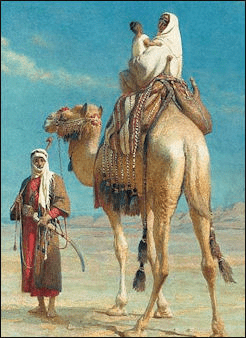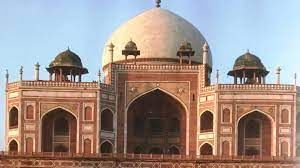NCERT Solutions for Class 11 History - The Central Islamic Lands
Q.1. What were the features of the lives of the Bedouins in the early seventh century?
Answer: The Bedouins were Arab tribes. The main features of their lives are as follows:
• Their social organization was based on independent tribes.
• They were camel pastoralists and moved with their animals from oases to oases.
• Date palm and camel milk were their main diet.
• They indulged in looting, plundering, and internal quarrels.
• They led a nomadic life.
 Bedouin
Bedouin
Q.2. What is meant by the term ‘Abbasid revolution’?
Answer: The term “ Abbasid Revolution” referred to the Dawa movement. This movement was initiated by Abu Muslim from Khurasan against the Umayyad dynasty. The Abbasid revolution put an end to the Umayyad dynasty. By overthrowing Umayyadies the Abbasid dynasty came into the throne in 750 CE.
Q.3. Give examples of the cosmopolitan character of the states set up by Arabs, Iranians, and Turks.
Answer: Examples of cosmopolitan characters of the states set up by Arabs, Iranians, and Turks:
- The vast Arab empire was inhabited by the people of multi-cultural identities,e.g.- the Muslims, the Christians, and the Jews.
- In the Turkish empire, the Egyptian, Iranian, Syrian, Sudanian, cultural developed simultaneously.
- The Iranian empire witnessed the development of Muslims and Asian culture.
Q.4. What were the effects of the Crusades on Europe and Asia?
Answer:
- The crusades left a deep impact on the aspects of Christian-Muslim relations.
- The influence of the crusades led to the declination of mercantile which paved the way for the emergence of nation-states.
- The Muslim states adopted harsher attitudes towards their Christian attitudes.
- The crusades left a deep impact on the aspects of Christian-Muslim relations.
- The Muslim writers named their invasion (invasion of Christian) as Frankish invasion who quickly established their influences over these regions.
- In the first crusade, soldiers from France and Italy captured Antioch in Syria and also claimed Jerusalem. Their victory was marked by the slaughter of Muslims and Jews.
Q.5. How were Islamic architectural forms different from those of the Roman Empire?
Answer:
Roman Empire Architectural Forms: Roman architecture: The Roman architectural forms or buildings were solid and magnificent. These features were the key features of the Roman architectural form. It introduced two architectural features the arch and cupolas or domes. There were multi-storeyed buildings with one raw arch standing over the another. Round arches were used in city gates, bridges, buildings, and monuments of victory. The spread of Christianity gave a new impetus to the building of the Roman empire. St Sophia in Constantinople and buildings in Jerusalem stand witness to the Roman architectural skill.
Islamic Architectural Forms: Islamic architectural form represents the great architectural symbol of the Islamic world. The Islamic art right from Spain to Central Asia represents some basic architectural features such as horseshoe arches, bubois, domes, minarets, columns, and open courtyard. The Islamic architectural pattern of building built around the central courtyard was not only the key feature of the mosques but also of sarai (built for carazans) and palaces. Calligraphy and geometric designs were also used to decorate architecture and manuscripts.
 Arab Ki Sarai
Arab Ki Sarai
Q.6. Describe a journey from Samarqand to Damascus, referring to the cities on the route.
Answer: Activity-based Question. Students are advised to do it with the help of their teachers.
Hint: While travelling from Samarqand to Damascus, a traveler would have to pass through many states. Some of these states are Transoxina, Khurasan, Iran, Iraq and Syria.
|
46 videos|163 docs|38 tests
|
FAQs on NCERT Solutions for Class 11 History - The Central Islamic Lands
| 1. What were the central Islamic lands? |  |
| 2. What were the main contributions of the central Islamic lands to the world? |  |
| 3. How did the central Islamic lands promote trade and commerce? |  |
| 4. What was the significance of Baghdad in the central Islamic lands? |  |
| 5. How did the central Islamic lands influence the spread of Islam? |  |

















